Fear not! We have not been silent on the blog because Delhi has sucked out our souls and slipped us into a deep despair, but because we have been busy traveling throughout North India. The quality of our internet has also dramatically decreased since arriving on this continent, which makes it harder to upload pictures and posts to the blog. We apologize for the delay!
We decided to begin our tour of India in Varanasi which is considered to be the holiest city for Hindus. We were also told that it is the oldest living city in the world. Varanasi is right along the Ganges river and it is believed that bathing in it will wash away all of one’s sins. It is also a place that many people come to die, because it is believed that dying here will release you from the cycle of reincarnation. This is called attaining moksha. For this reason, there is a constant stream of cremation ceremonies occurring in the two ghats that are designated specifically for disposing of bodies. If you visit either of the cremation ghats during the day, you will almost certainly see a cremation occurring. This makes it unfortunate that many people travel to Varanasi to bathe in the Ganges and wash away their sins as they are bathing in the remains of the hundreds of people that are cremated there every day. It is also one of the most polluted rivers in the world due to the large amounts of sewage and industrial waste that get dumped in it daily. Needless to say, Brian and I are still in possession of our sins.
The ghats themselves are very interesting to see and walk along. They are a series of steep steps that descend from the roads and alleyways of the city down to the river. There is a walkway that connects all the ghats, so that you can walk all along the Ganges for several miles. Walking along the river we could see many people out in boats along the river, people bathing, and people selling snacks and crafts from small stalls. There are also a lot of cows that just hang out along the riverside, although how they get down the narrow, steep steps of the ghats remains a mystery to me.
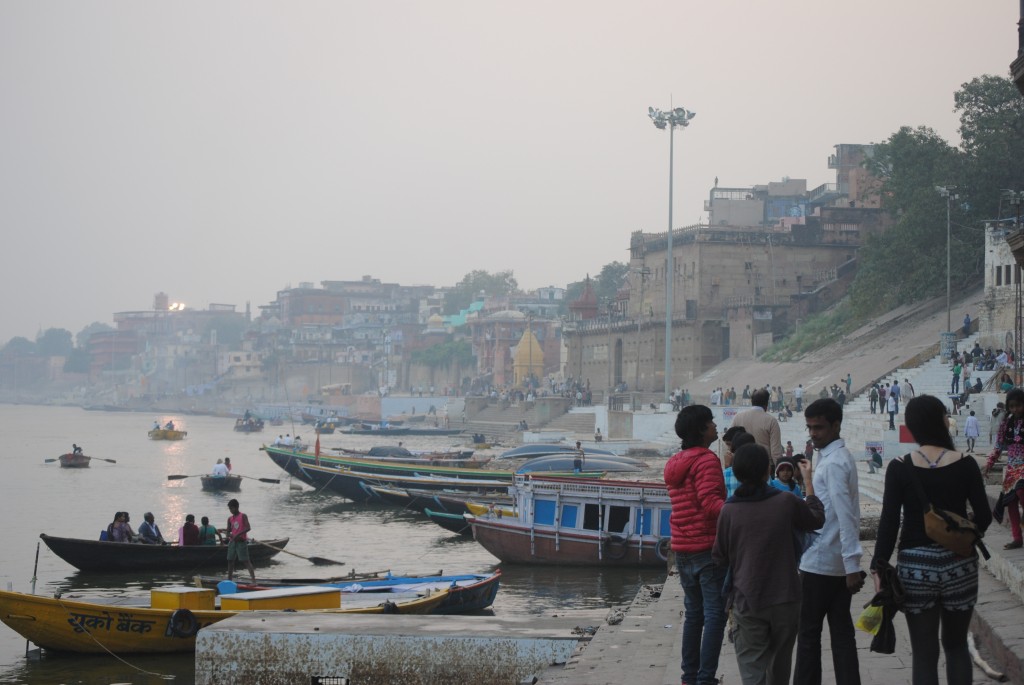
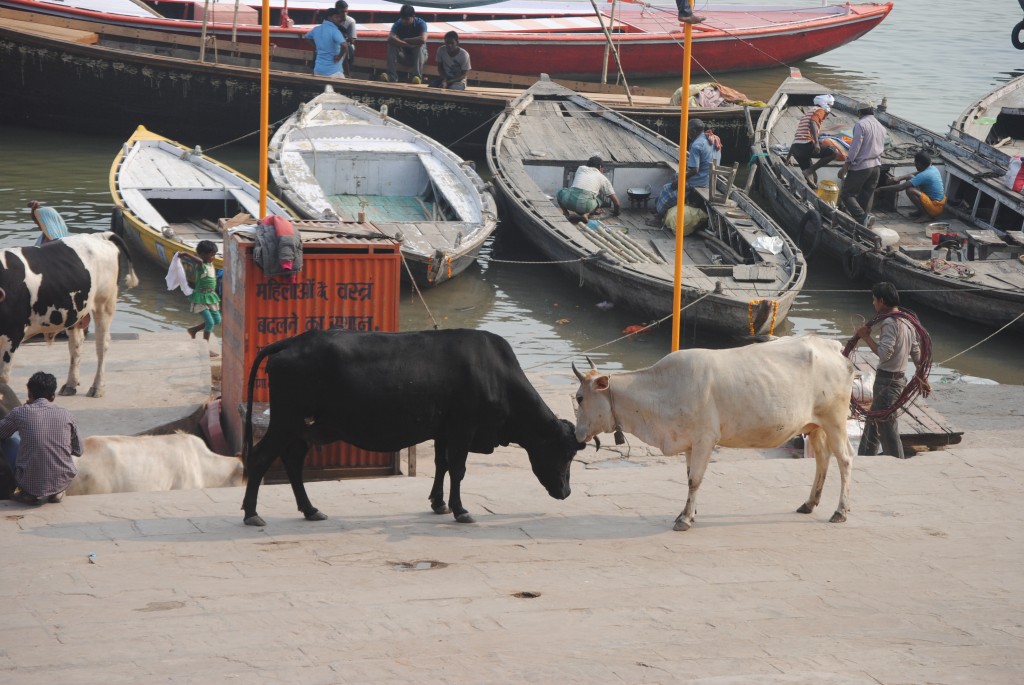
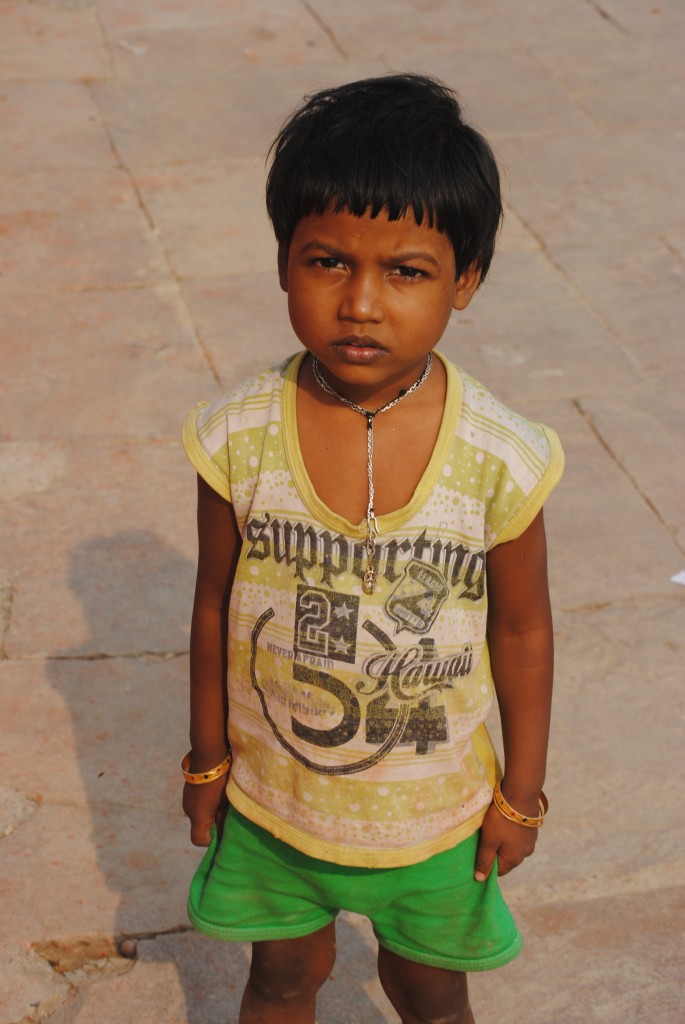
We really lucked out because there were two celebrations occurring while we were in Varanasi. The first is Ganga Mahotsav which is a festival to celebrate the culture of Uttar Pradesh (the State in which Varanasi is located). During this festival there are games, music and other performances. I was lucky to stumble across one of these games where men were competing to see how many times they could swing large metal weights. In the evening a stage was set up at one of the ghats for various music and dance performances. We watched a sitar performance, which we have since decided is not our favorite type of music.
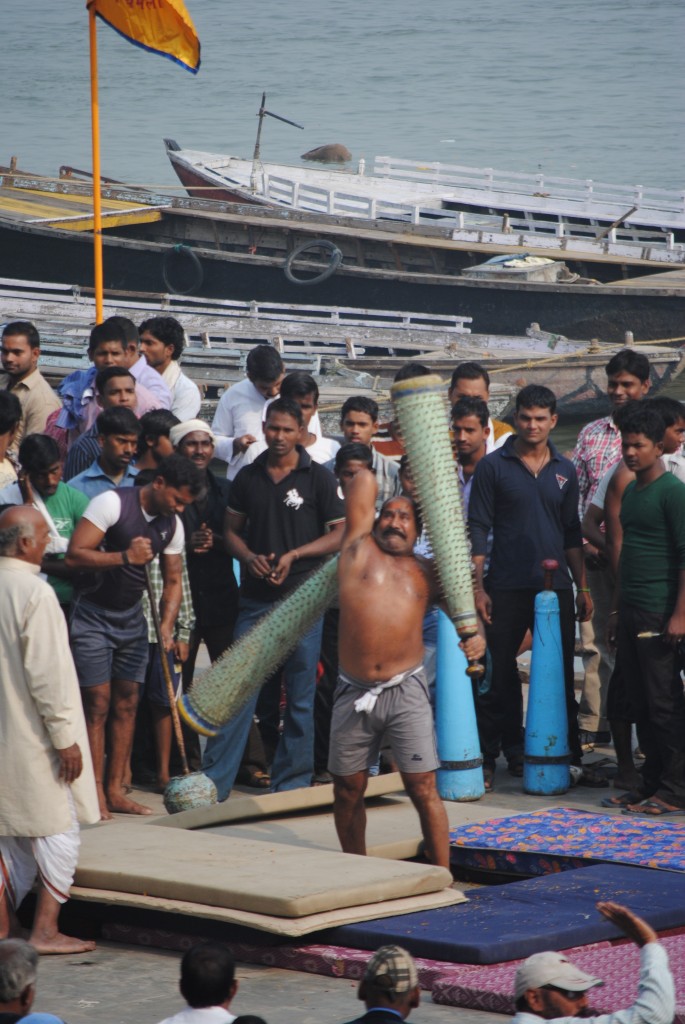
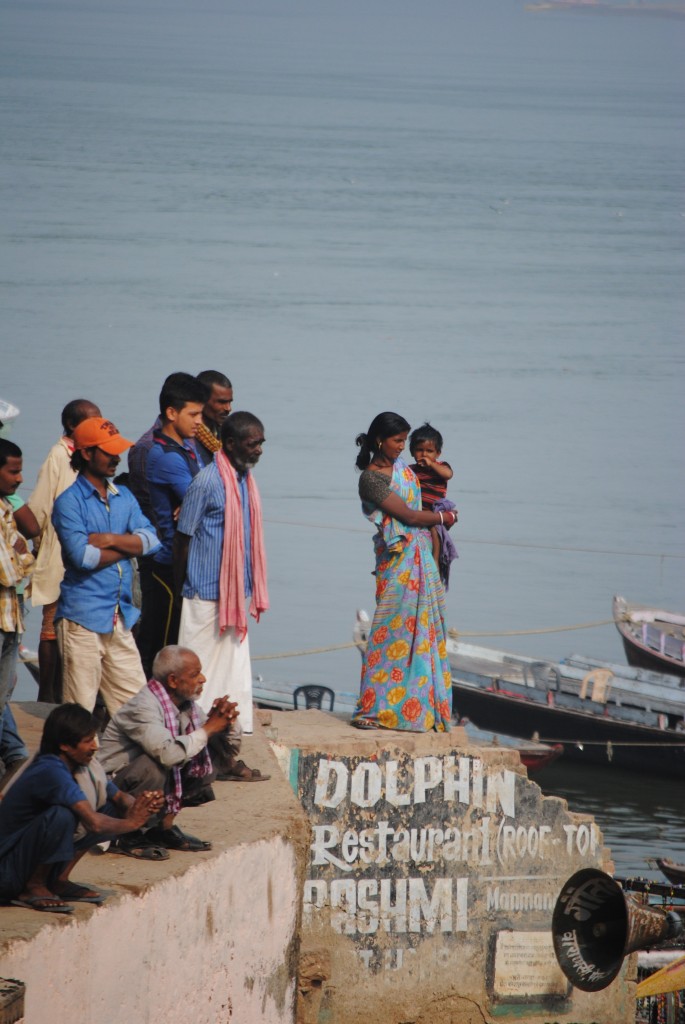
The second celebration occurring while we were there is called Dev Deepawali. This is a celebration of the day that it is believed the gods descend to earth. Candles (diyas) are lit and floated down the river to welcome them. The guesthouse we stayed at very helpfully arranged for a boat to go out on the Ganges during the evening of Dev Deepawali for anyone staying there that wanted to participate. This gave us a great view of all the festivities. We were also provided with our own diyas to float down the river, and we were told to make a wish as we placed them in the water. I managed to accidentally stick my hand in the Ganges as I was putting mine in, so either I am partially cleansed of some sins or I now have Hepatitis–if only I had changed my wish in time to make sure it wouldn’t be the latter!
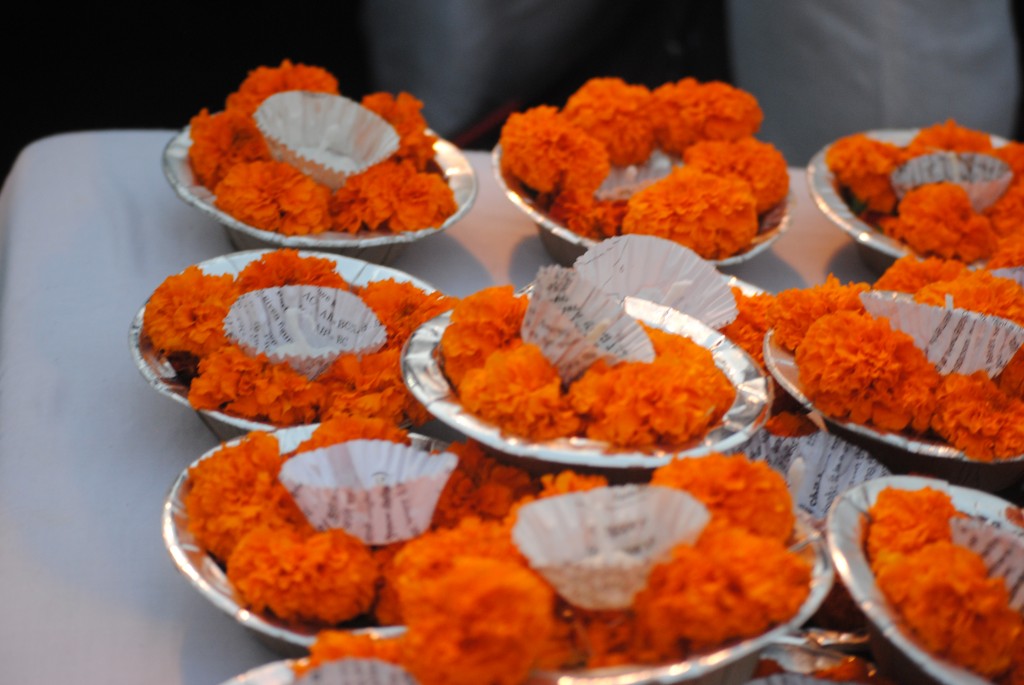
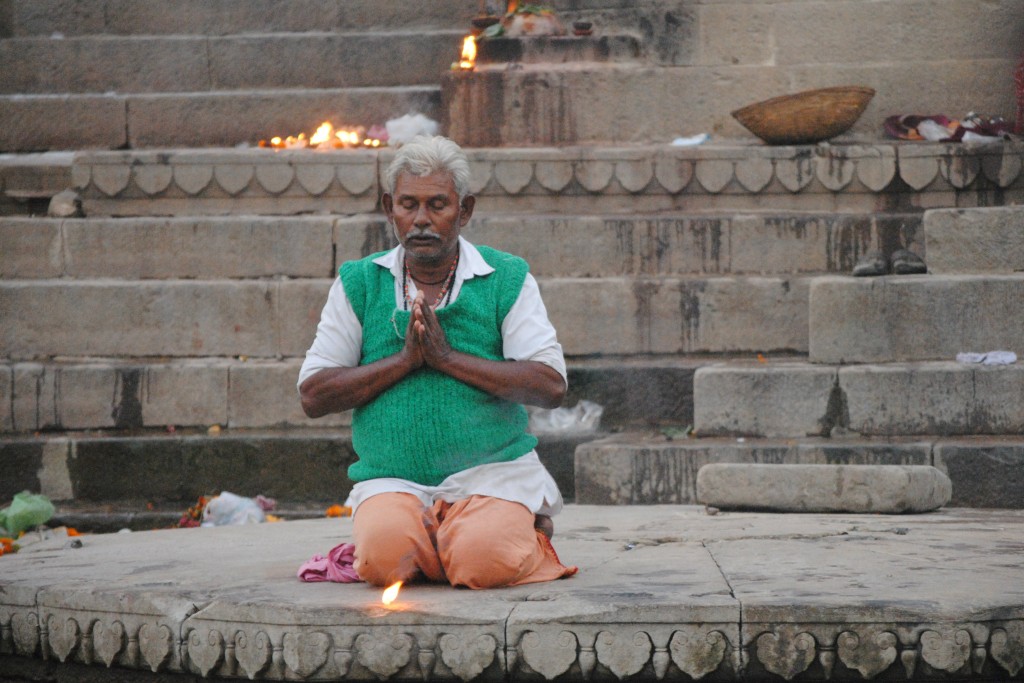
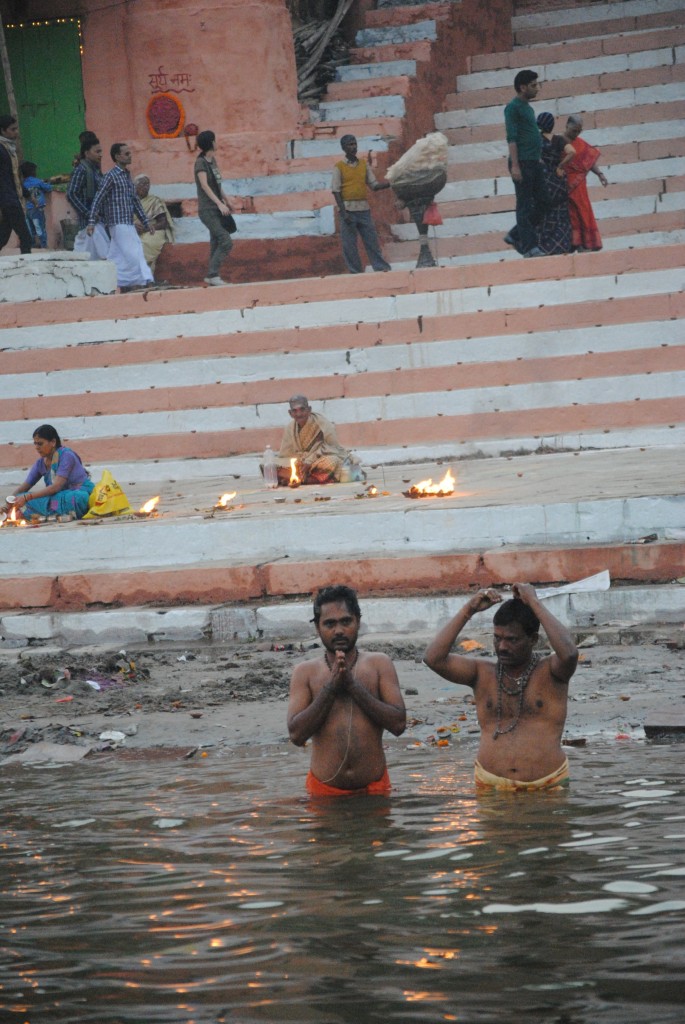
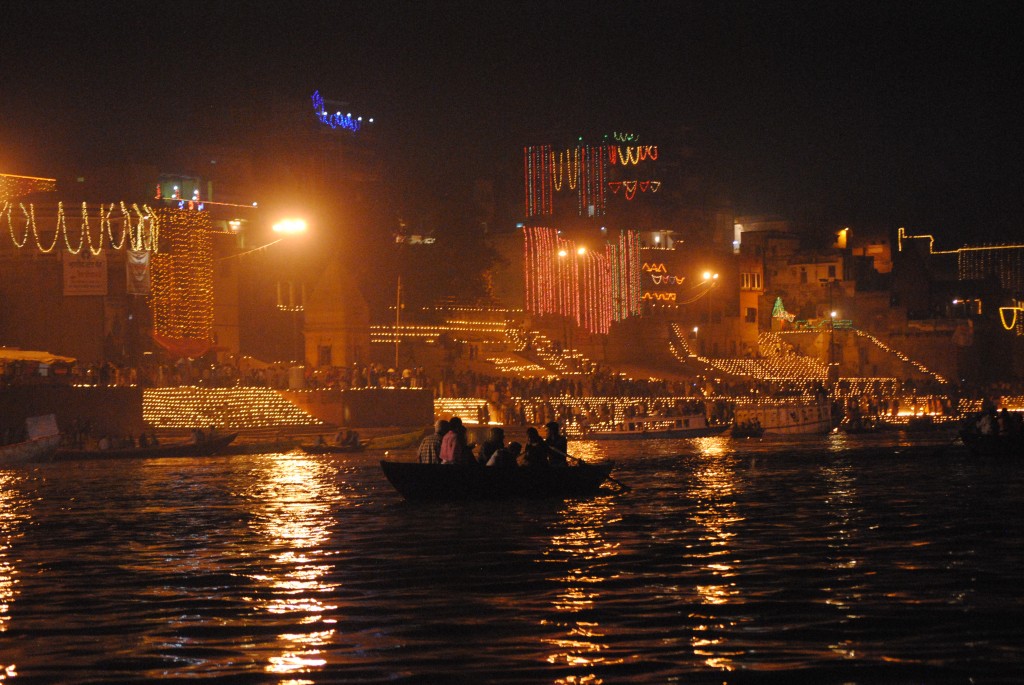
What was particularly interesting to me to observe is that despite Varanasi being a very holy city, there still are a large number of scammers. One of the biggest scams we had read about, and then later had the fortune to witness, is when someone chats you up by the main cremation ghat and tells you they work for the hospice above the ghats where people live while they are waiting to die. They will ask you for money to help keep the people living there comfortable or for various other things related to the cremations. The man who approached us claimed to be responsible for the cremation fires and eventually asked for money for more wood. When we said no and walked away, he had the nerve to call out after us, “But it’s not for me, it’s for the people that live here!!” (he had also forgotten he had spoken with me two days earlier and told me a completely different story so I know for certain he was lying about the cremation fires.) It is really surreal to have an exact scam that you have read about occur in real life. While we understand the social and economic circumstances that lead to these types of incidences in India, it feels particularly offensive and sacrilegious to me that people do this in such a holy city and then use the people that have come to Varanasi to die as an excuse to scam money for themselves.
At our guesthouse in Varanasi, we met an Indian guy named Avneesh who has been living in Holland for the past 10 years and recently moved back to India. He is traveling throughout India to places he has never visited before. It turned out that he was headed to our next destination, Bodhgaya, and so we traveled with him there. It was really nice having someone else to travel with and to get some good tips and advice for navigating around India. We felt reassured that every time we told him about something that confounded us about India, he’d just say, “Yep, that’s India!”
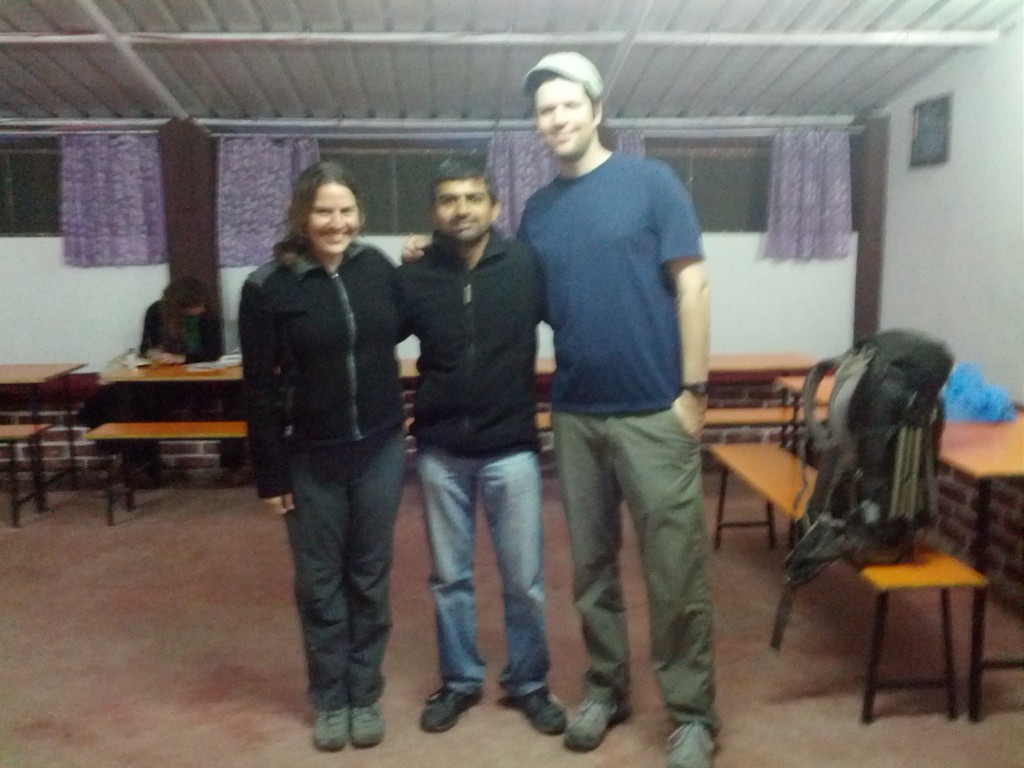
It was interesting to travel to Bodhgaya after Varanasi, because Bodhgaya is considered to be one of the holiest places for Buddhists. It is here that Buddha achieved enlightenment under the Bodhi tree. Today, a descendant of the original tree is preserved in a temple that was built by an Indian emperor around 200 BCE. The original tree was destroyed by his wife, regrew, and then was destroyed several more times by later kings. Today, you can visit the temple and sit by the tree. There are monks who sit behind a wall and chat over a loudspeaker. We also observed several Buddhist groups sit by the tree chanting, many of whom were crying as they chanted. There were also several men having their heads shaved next to the tree in what we assumed was preparation for them becoming Buddhist monks. Brian filmed some of our time sitting there, so for the full experience click here: http://www.youtube.com/watch?v=JRw9mLKM8nY
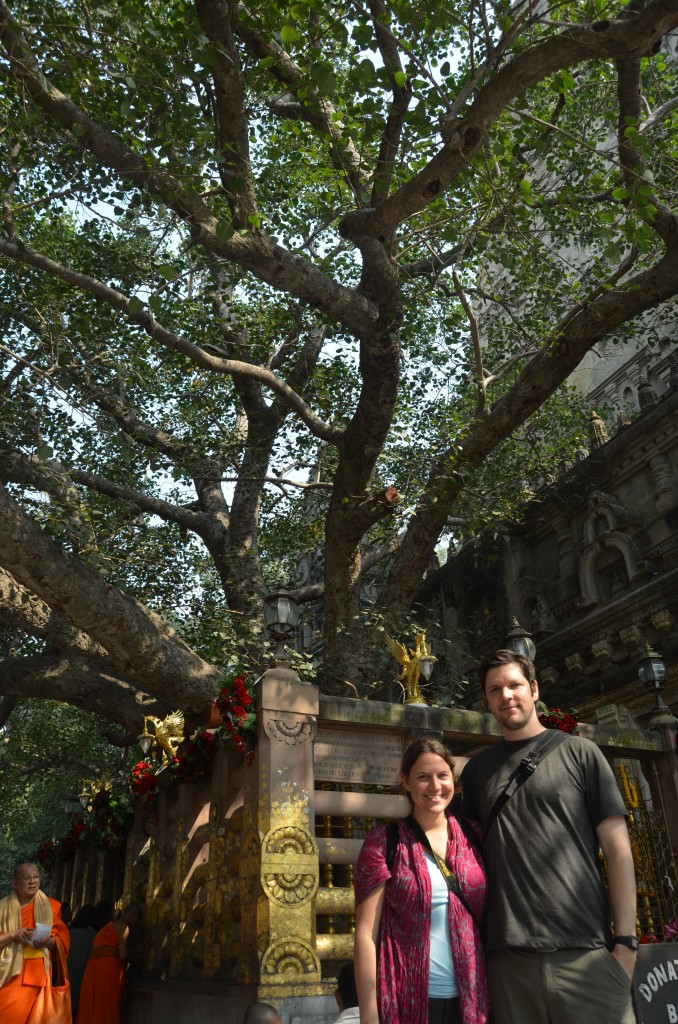
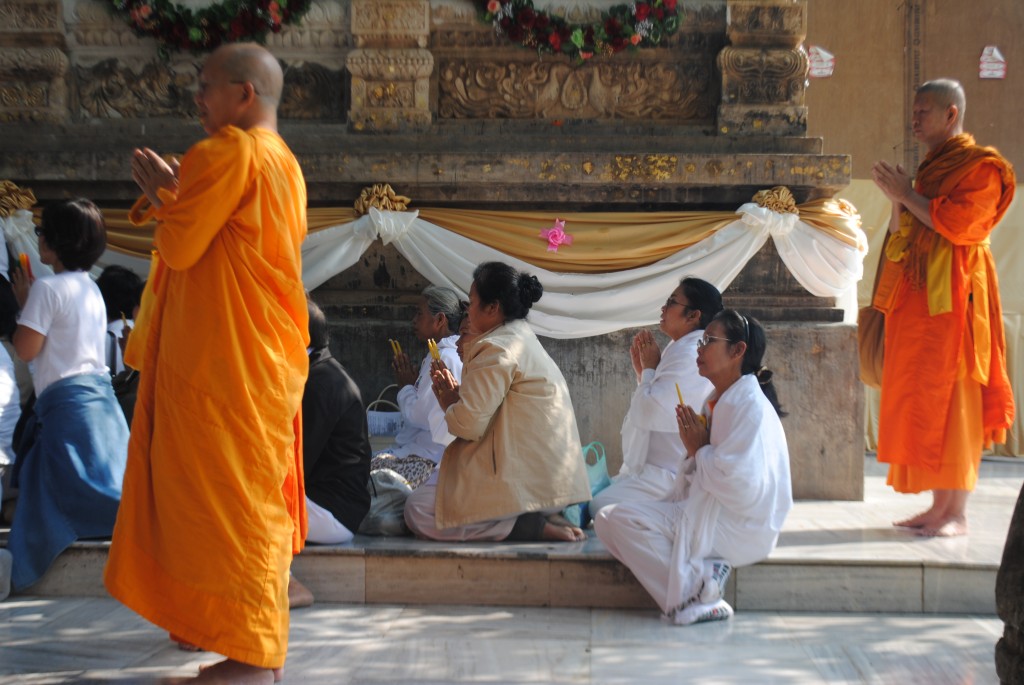
There is a very interesting history about many important Buddhist sites in India. Because India is a predominantly Hindu country, there was a period of time when important Buddhist things in India fell into neglect and disrepair. Starting in the past few decades, there has a been campaign from Buddhists in other countries to restore these places to their original prominence. One such campaign, which seems more bizarre than anything, we actually witnessed ourselves in Bodhgaya. Buddhist Thais have decided to donate over 600 pounds of gold to paint the Mahabodhi temple (where the Bodhi tree is located) with. We could see that the top of the temple was covered in scaffolding and it had started to be covered in gold. We really had a hard understanding how painting a temple gold could be a good way to demonstrate your devotion to Buddhism, a religion based on the rejection of materialism. Not only that, but Buddhists from every Asian country seem to be in competition in Bodhgaya to build beautiful temples, monasteries and Buddha statues there, almost as though they are trying to prove which country has the “best Buddhists”.
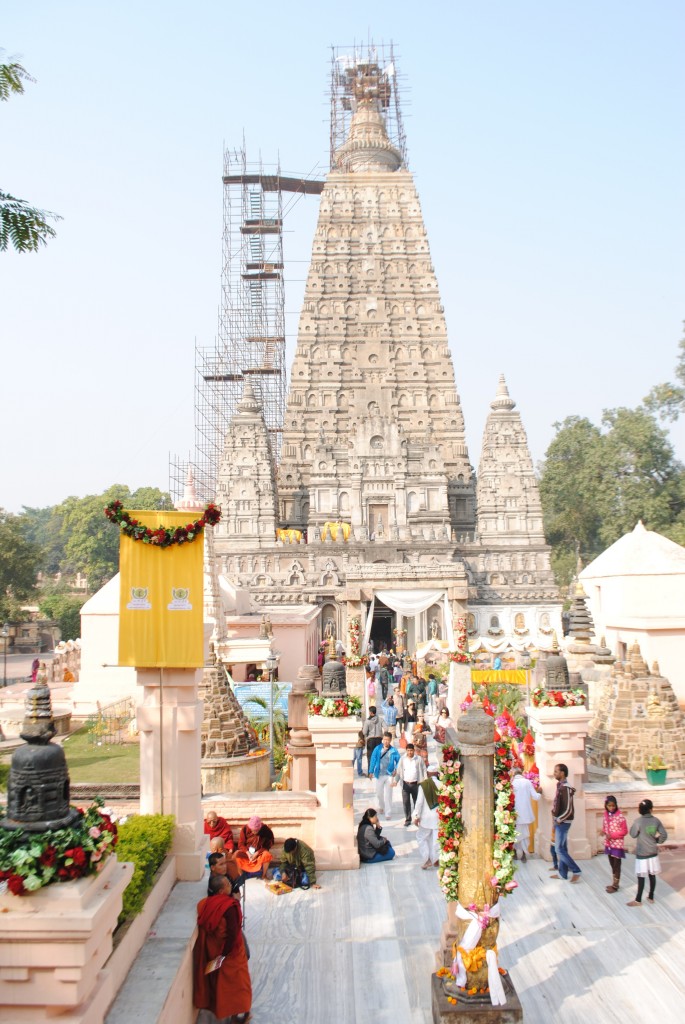
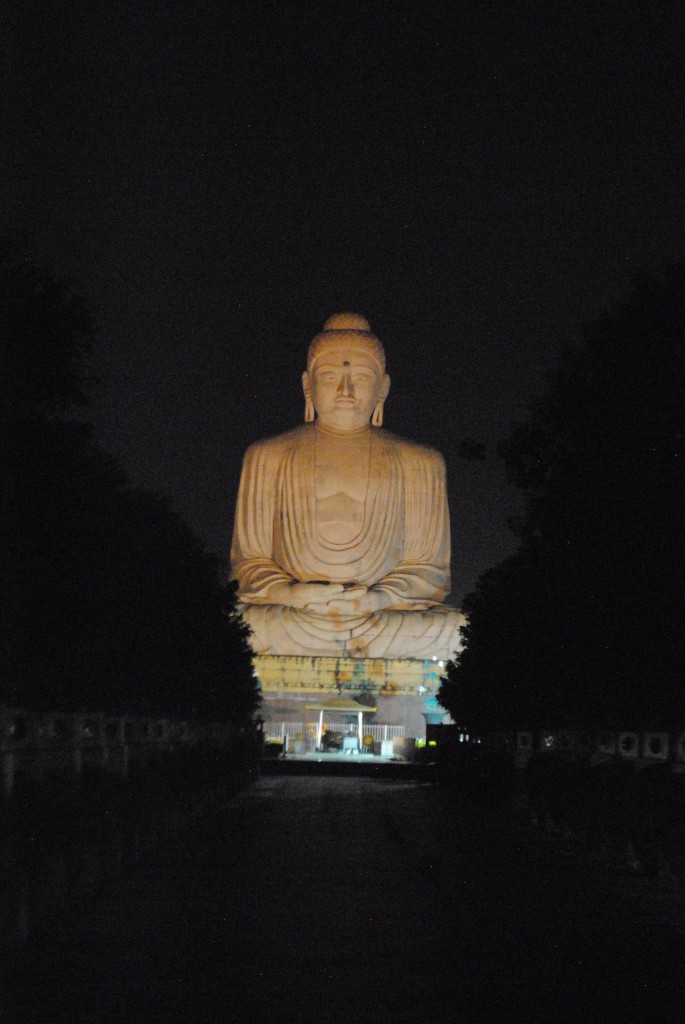
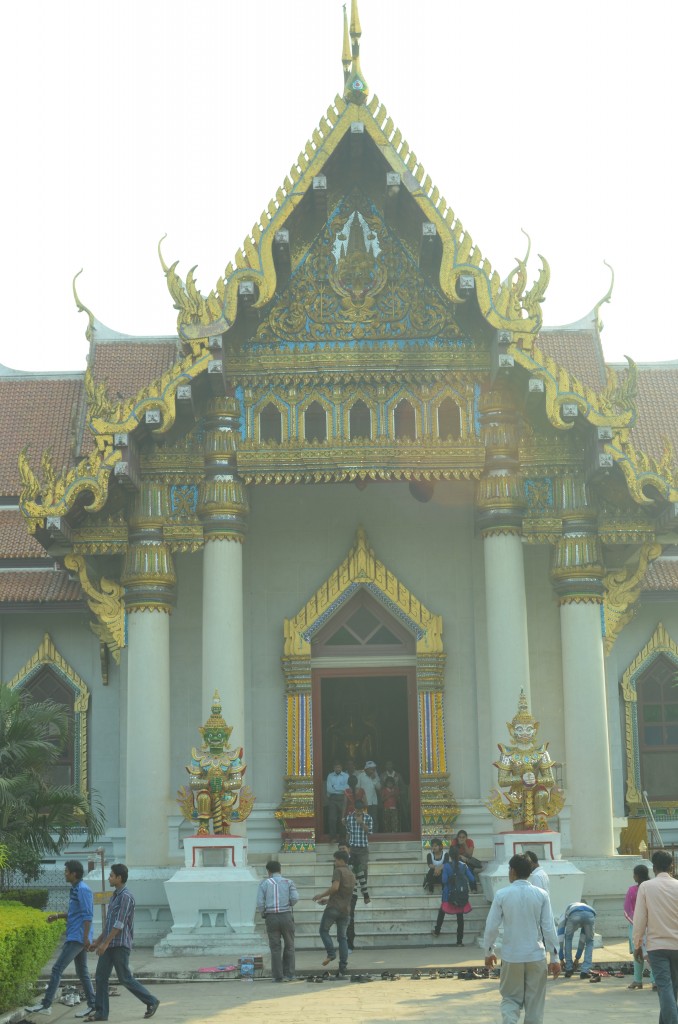
It became clear to us in more ways than just this particular example how many different types of Buddhists there are and that not all of them seem to subscribe to the Buddhist philosophy of nonmaterialism and respect for others. One really good example was when we were sitting next to the Bodhi tree, which felt very calm and peaceful, and we were watching the people chanting and praying. A man walked up and just started whacking the Bodhi tree with his bag, so that he could break leaves off to take with him. He whacked it so hard, that a giant branch fell down and almost hit a monk, who was meditating on the ground, in the head. We thought that would be the end of it, but NO!, the guy picked up the branch and proceeded to hit the tree with it. No one said anything to him and other people just ran up to grab pieces of it for themselves. It was very bizarre and all we could do was look on in horror.
So all in all, two of the holiest cities in India were not what we were expecting. Even though we did not have very spiritual experiences at either of these cities, they were still very interesting to see and worth visiting.
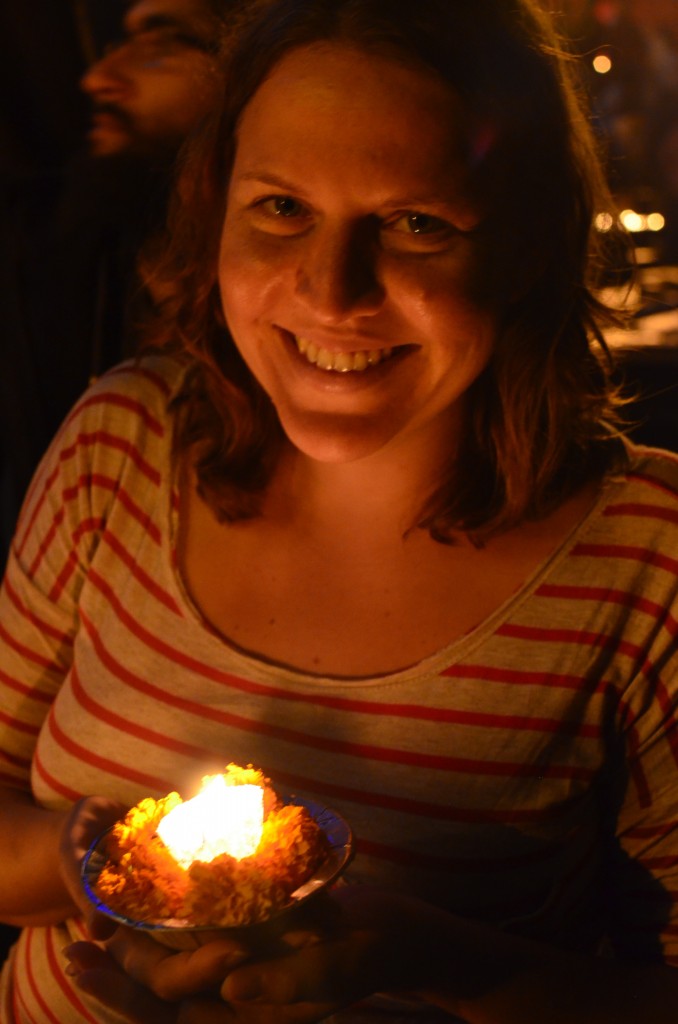
One response to “A Tale of Two (Holy) Cities: Varanasi and Bodhgaya”
Fascinating! And amazing photos!!